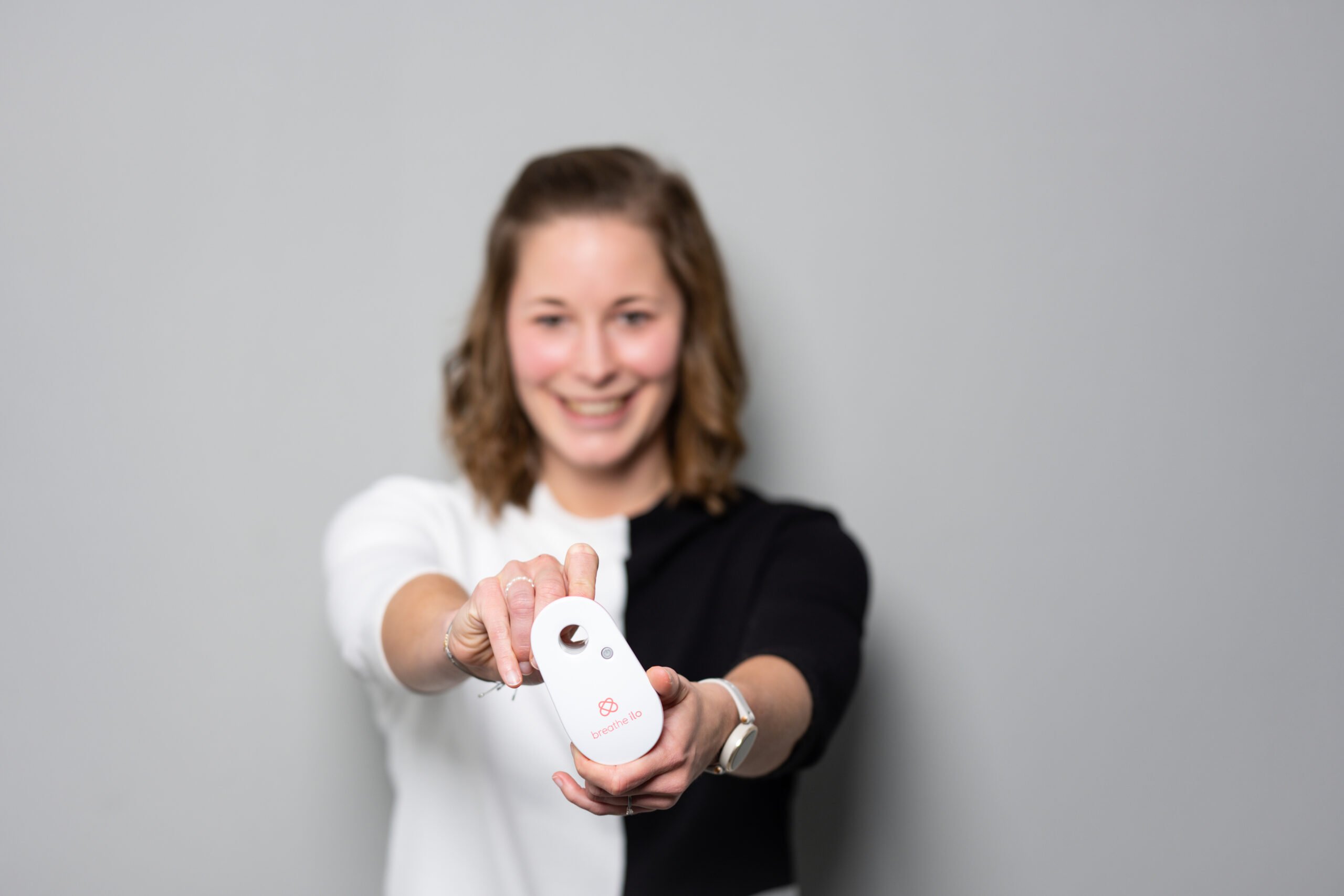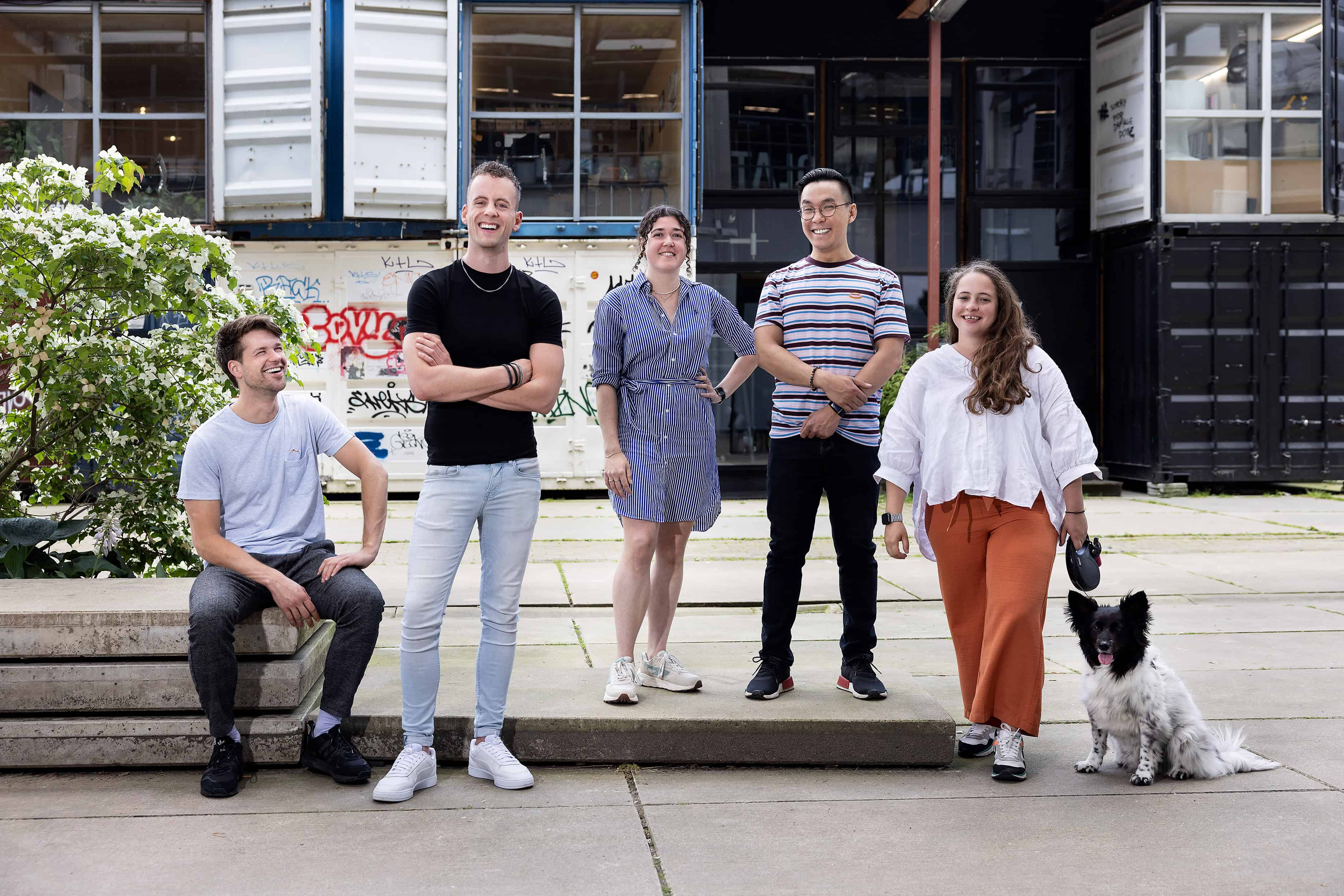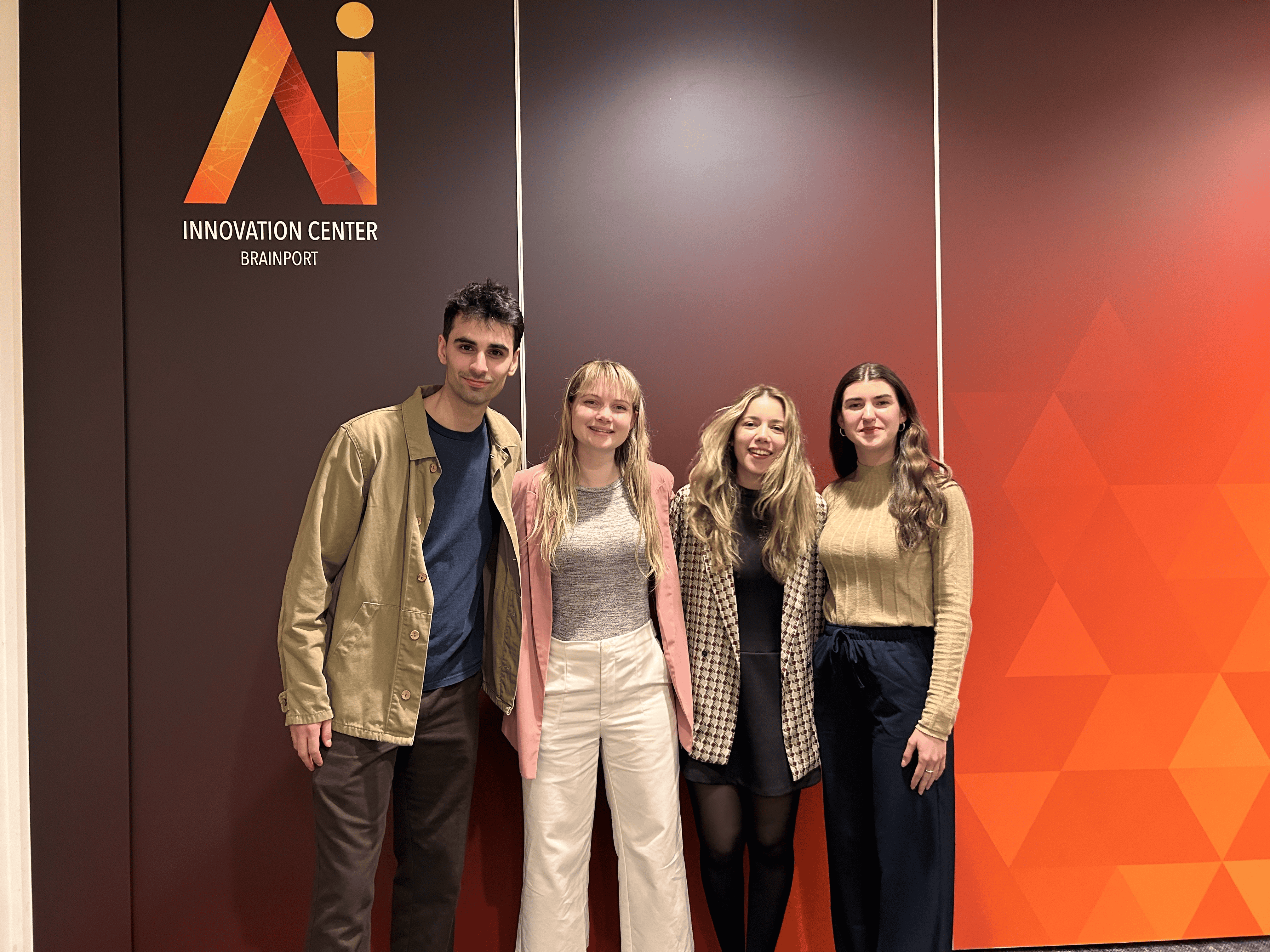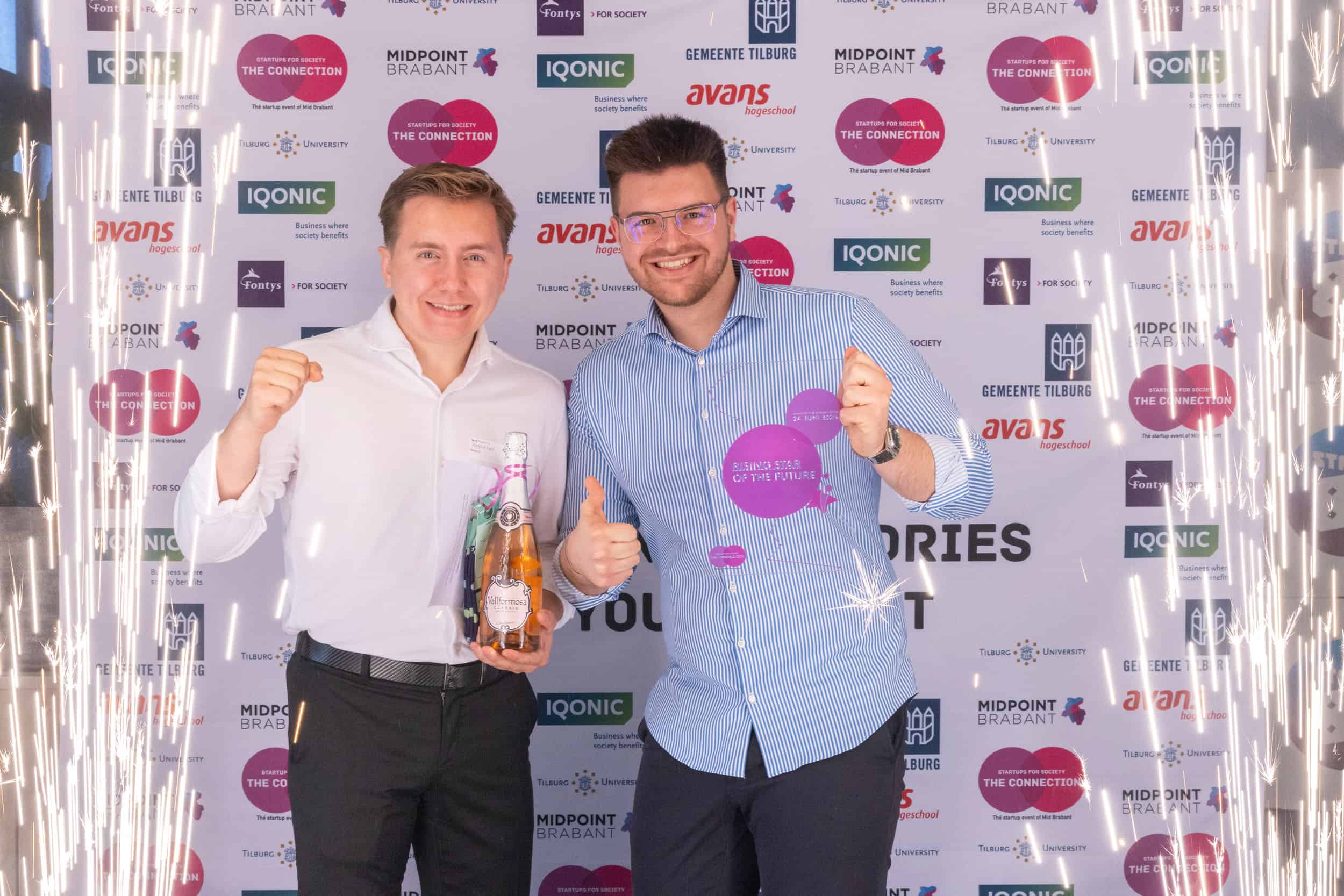
About breathe ilo
- Founders: Lisa Krapinger-Rüther and Wernhard Berger
- Founded in: 2021
- Employees: 9
- Money raised: €3 mil. subsidies, €4 mil. investment; turnover since 2021
- Ultimate goal: Make breathe ilo successful internationally
Hormones influence the CO2 content of the air we breathe, something that was already clear from a study in the 1950s. But corresponding measurements were previously only possible on large machines in a clinical setting. The start-up Carbomed Medical Solutions GmbH has succeeded in integrating this technology into a handy fertility tracker. The device is the size of a computer mouse and the user only has to breathe into the device’s mouthpiece for a minute each day. The data can then be read in an app.
Lisa Krapinger-Rüther, who studied International Business, was responsible for marketing and sales at Carbomed before taking a majority stake with co-founder Wernhard Berger to take over international marketing. In our Start-up-of-the-day series, Krapinger-Rüther talks about her plans for the fertility tracker called breathe ilo:
What problem does her fertility tracker solve and why is it important?
Our fertility tracker helps women better understand what’s going on in their bodies during the different phases of their menstrual cycle and how to adapt to it. Women who are actively trying to conceive can use the device to get pregnant more easily because it shows their fertile days in real time. In addition, we provide comprehensive information on the app about the different phases of the menstural cycle. On the one hand, these are explanations of typical complaints and, on the other, tips on how these can be alleviated or avoided in terms of diet, lifestyle and exercise. For example, there is a yoga flow for the luteal phase and recipes to support fertility in the different cycle phases.
Currently, 60 percent of the women who use breathe ilo use it to fulfill their desire to have children and 40 percent use it to adjust their lifestyle to their menstrual cycle phase or prevent PMS symptoms.
What was the biggest obstacle you had to overcome?
During the menstrual cycle, certain hormones are produced at different intensities: LH hormones promote ovulation and corpus luteum formation, progesterone helps the uterus prepare for pregnancy and estrogen promotes the buildup of the lining of the uterus. It is precisely these hormones that influence the CO2 content of the air we breathe – and around the ovulation phase, the CO2 content drops. This is what our technology is based on. It wasn’t easy to put this feature into a handy device to give every woman the ability to track her cycle at home without having to go to the doctor.
What achievements have made you really proud?
We are proud that we have managed to develop a sustainable device that, while technically highly complex, is quite simple to use. Determining a woman’s fertility cycle in home monitoring using the breath is unique in the world.
What are the conditions like at your location?
We have two locations, one on the MED Campus in Graz, Austria, where all the development also took place, and one in Vienna, Austria, where marketing, sales and management are located. For internationalization, Vienna is the better location because a lot of networking is possible there. We also saw Vienna as a doorway to Germany. We were in Berlin and German cities a lot in the beginning and currently Germany is our biggest market. Around 65 percent of our sales are there, while in Switzerland it’s only 6 percent. We initially secured approval for the EU, but believe that in the future, North America will be our best market. Right now we are preparing all the approvals and we want to launch in the U.S. in 2023.

Where would you like to be with your company in five years?
By the time we enter the U.S., we already want to have expanded functions. We are currently working on new algorithms and studies that will make it possible to use the fertility tracker as a contraceptive method as well. That is not yet possible at the moment. The studies are quite lengthy because several cycles have to be recorded from each test person. In addition, we would also like to develop further in the direction of a platform to be able to support women in all their life phases. At the time of sexual maturity, they can use the fertility tracker to get to know their bodies better, and later they can use it for contraception and – when the time is right – to get pregnant. This way we accompany them through their fertile period, up to menopause, although there are also hypotheses that say that the CO2 in the breath remains down during menopause. After conducting relevant studies, we would also like to cover this phase with breathe ilo. Because ultimately, data on a woman’s cycle can be a very good indicator of her health.
What makes your fertility tracker better or different than existing things?
What our users like about it is the simplicity of use. Competing products are mainly fever thermometers and urine test strips, which are cumbersome and unattractive both in use and interpretation – and show the fertile phase only after it has occurred. In contrast, breathe ilo is a stylish little device that measures the fertile phase beforehand and puts women back in control of their own cycles.








